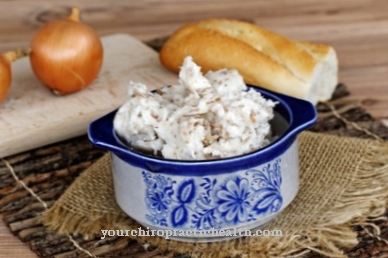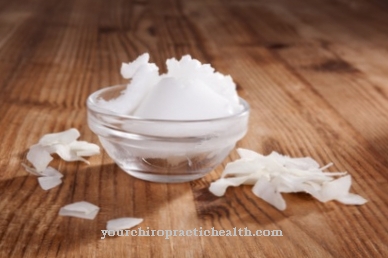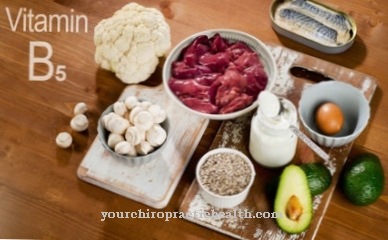The sweet potato is very popular thanks to its sweet taste and versatile use. Despite its name, the tuber is only distantly related to the conventional potato. The plant originally comes from Latin and Central America; but today it is also grown in Africa and some southern European countries.
What you should know about the sweet potato

The sweet potato is also under the names Potatoes, Tuberous bindweed and White potato known. The useful plant belongs to the bindweed family. It is at best distantly related to the potato, a nightshade plant, also native to Germany.
Together with the potato and the cassava, the sweet potato is the three most commonly produced tuber and root food plants. It has been cultivated in Central and Latin America since pre-Columbian times; But it is also known in Africa, China and Israel. Southern European countries such as Spain, Portugal and Italy also grow sweet potatoes today. A total of around 120 million tons of sweet potatoes are grown and traded annually. The plant itself is perennial and develops few or even no flowers, which only open for a few hours in the early morning and wither again in the morning.
The sweet potato plants rarely bear fruit. The tuber itself grows underground and can be spherical, pear-shaped or spindle-shaped. The size varies between a few centimeters up to 30 cm; accordingly, the weight varies considerably from less than 100 g to several kilograms. Since various plant pigments are deposited in the tuber during growth, there are white, yellow, orange, purple and pink sweet potatoes. In addition to the tuber itself, the leaves of the sweet potato can also be consumed. In the home countries of the potato they are served as spinach-like vegetables.
As the name of the potato suggests, the tuber tastes very sweet compared to a conventional potato and is more reminiscent of a pumpkin. The sweetness comes from a comparatively high sugar content, which is around 4.2 g per 100 g of sweet potatoes (the same amount of sweet corn contains around 3.2 g of sugar). In some types there is also a small amount of hydrogen cyanide, which is harmless for adult consumers, as it is reduced by heating during preparation.
Importance to health
Even if sweet potatoes contain a comparatively high amount of sugar, they are rightly ascribed a positive effect on human health. For example, they contain numerous vitamins and nutrients that the organism needs for proper function.
Studies have shown that regular consumption of the tuber can help regulate blood sugar and cholesterol levels. The consumption of sweet potatoes can also have a positive effect on blood pressure. The ingredients, some of which are found in high concentrations in the potato, can help prevent diseases such as cancer, Alzheimer's disease, rheumatism or cataracts. Since they are also high in fiber, regular consumption of the tuber can aid digestion and not only prevent constipation, but also colon cancer.
Secondary plant substances and vitamins combine in the potato to effectively support the immune system. Since they are also rich in natural folic acid, women who want to have children can also benefit from their consumption, because folic acid is essential for the structure and development of embryonic tissue.
Ingredients & nutritional values
| Nutritional information | Amount per 100 gram |
| Calories 86 | Fat content 0.1 g |
| cholesterol 0 mg | sodium 55 mg |
| potassium 337 mg | carbohydrates 20 g |
| Fiber 3 g | protein 1.6 g |
Sweet potatoes contain high levels of vitamin A and beta-carotene. The former is beneficial for the growth and function of skin, mucous membranes, blood cells and the metabolism, as well as for the visual process. As a secondary plant substance, beta-carotene has a protective effect on cells and can, for example, inhibit cancer. Even if the sweet potato has a high sugar content, as already mentioned, it also contains a comparatively high water content of up to 78%.
The fat content is similar to that of conventional potatoes at around 0.1 g per 100 g. On the other hand, the protein content is slightly lower at 1.6 g (for comparison: potatoes contain around 2.0 g protein per 100 g). 20 g of carbohydrates make the sweet potato an attractive food for athletes and bodybuilders. Furthermore, numerous vitamins and minerals can be found in the tuber. The content of riboflavin, sodium and zinc, which are present in a remarkably high concentration, should also be emphasized.
Intolerances & allergies
For allergy sufferers, there is good news at this point: There is no evidence of allergic reactions to sweet potatoes. This fact is due to the fact that the tuber contains very few allergens. For people who cannot tolerate conventional potatoes, for example, the sweet potato is often a welcome alternative. There are also hardly any intolerances associated with the sweet potato. Due to the high sugar content, diabetics should not use the popular tuber too often.
Shopping & kitchen tips
Sweet potatoes are then ready to eat and contain a maximum of ingredients and taste if they are evenly colored. They should have a firm consistency and have no pressure points or soft parts.
It is true that the tubers can easily be stored in a dry place for several months without being damaged; however, it is advisable not to leave it for longer than two weeks in order to preserve all of the ingredients. Storage in the refrigerator is not recommended: a room temperature of 18-22 ° C is sufficient. The peel of the sweet potato is edible and can be used in many recipes. To do this, the tuber should only be washed in advance under running water.
Alternatively, it can be peeled and boiled like a conventional potato. After peeling, the sweet potato can quickly become discolored, but this is harmless. On average, whole sweet potatoes take between 30 and 45 minutes to cook.
Preparation tips
Sweet potatoes can be used in many ways in the kitchen. They taste great as puree, French fries or fried potatoes, for example, and are a healthy accompaniment to vegetable and meat dishes. The tuber is just as suitable as an insert for soups and stews as it is as an ingredient for gratins, bread and even cakes.
Combined with light dips or hearty with sauerkraut, for example, the batatas provide a welcome change in everyday kitchen life. As vegetable chips, they are a low-fat snack alternative to potato chips. In contrast to potatoes, sweet potatoes can also be eaten raw. The tubers, which are very popular with children of all ages due to their sweet taste, are also suitable as baby food.




























.jpg)